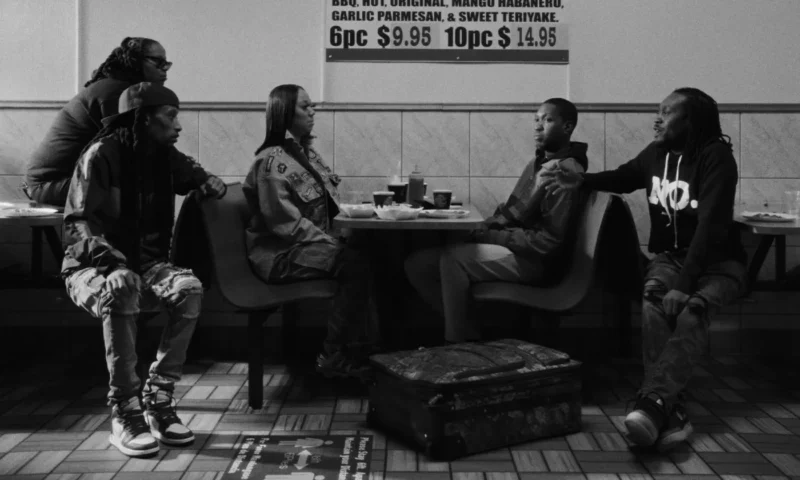Rap Is Art, Not Evidence
Share
Explore Our Galleries
Breaking News!
Today's news and culture by Black and other reporters in the Black and mainstream media.
Ways to Support ABHM?
By Kelsey Brown, Yes Magazine

Though rap music is the most listened to genre in the United States, it is still the only creative medium consistently being used to prosecute and incarcerate people. The ongoing criminal trial of Grammy-winning artist Young Thug exposed this prosecutorial tactic to many people for the first time, but it’s in no way a new practice, with nearly 700 documented cases of lyrics being used to criminalize artists, predominantly young Black and Latino men.
As We Speak: Rap Music on Trial, a documentary by J.M. Harper, Emmy-nominated director of jeen-yuhs: A Kanye Trilogy, intricately examines the evolution of racist attitudes and actions toward Black music genres that spans centuries, connecting the current legal weaponization of rap music to a long-standing history of Black musical genres being deemed immoral and illegal.
“At every stage of a new Black [musical] genre being made, it was stifled,” Harper says. “It was bringing white and Black people together. It was erasing these fabricated racial boundaries that allowed one people to oppress another. That was, and still is today, a very contentious thing to do. So why are lyrics used in this way? There’s 400 years of history to go through to answer that question.”
During the trans-Atlantic slave trade, enslaved people used song as a way to hold onto home, hope, and culture. While working in fields, Negro spirituals often disguised hidden messages that could be sung in front of plantation owners. Following the Stono Rebellion, the largest rebellion by enslaved people in the British mainland colonies, South Carolina created the Negro Act in 1740, banning drums and citing them as a tool of insurrection.
There were also protest songs in the rhythm and blues era. Both jazz music, which emerged in criminalized places like brothels and speakeasies, and rock ’n’ roll (before it was stolen from Black artists like Sister Rosetta Tharpe and appropriated by artists like Elvis Presley) were demonized. During the civil rights movement, soul music was a clear outlet for Black voices to be heard, like James Brown’s “Say It Loud—I’m Black and I’m Proud.”
Hip-hop followed shortly after, emerging from the underground scene and quickly growing into a whole new genre and culture that encapsulated DJing, graffiti, breakdancing, and eventually rap, born out of frustration and chaos of negligent social structures within the South Bronx, New York.









Comments Are Welcome
Note: We moderate submissions in order to create a space for meaningful dialogue, a space where museum visitors – adults and youth –– can exchange informed, thoughtful, and relevant comments that add value to our exhibits.
Racial slurs, personal attacks, obscenity, profanity, and SHOUTING do not meet the above standard. Such comments are posted in the exhibit Hateful Speech. Commercial promotions, impersonations, and incoherent comments likewise fail to meet our goals, so will not be posted. Submissions longer than 120 words will be shortened.
See our full Comments Policy here.